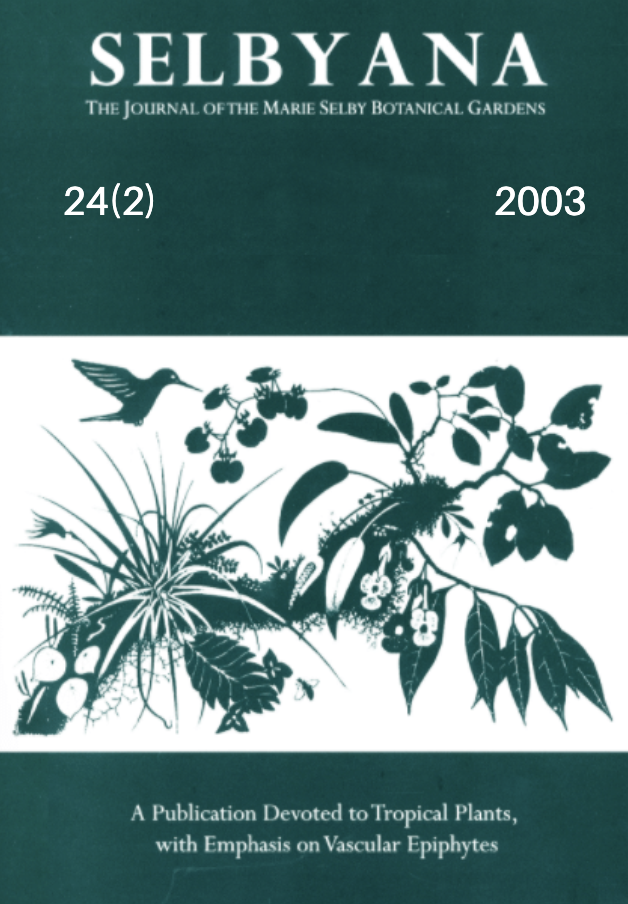Abstract
To study the impact of deforestation on vascular epiphyte diversity, we compared species richness in plots in primary forest and adjacent 15-year-old fallows in two different sites in the Yungas of Bolivia, including submontane forest near Sapecho (500-1200 m) and montane forest in the Parque Nacional Cotapata (1500— 2500 m). Nearly 500 species of epiphytes (25 families, 110 genera) were recorded, and a 1.0 ha plot composed of eight subplots with a total surface of 0.32 ha of montane forest had up to 175 species. These forests rank among the richest worldwide in terms of epiphyte diversity. Fallows had 60-70% fewer species than neighboring natural forest. Numbers of species of orchids, bromeliads, Hymenophyllaceae, and Grammitidaceae were much lower in fallows than in primary forest, but hemiepiphytic aroids, Polypodiaceae and Aspleniaceae, were similar. Reduction of epiphytic species diversity in fallows can be explained by structural characteristics of the fallow trees, the lack of a dense moss cover, and the drier microclimate in the fallows.
Open Access and Copyright Notice
Selbyana is committed to real and immediate open access for academic work. All of Selbyana's articles and reviews are free to access immediately upon publication. There are no author charges (APCs) prior to publication, and no charges for readers to download articles and reviews for their own scholarly use. To facilitate this, Selbyana depends on the financial backing of the Marie Selby Botanical Gardens, the hard work and dedication of its editorial team and advisory board, and the continuing support of its network of peer reviewers and partner institutions.
Authors are free to choose which open license they would like to use for their work. Our default license is the Creative Commons Attribution-NonCommercial 4.0 (CC BY-NC 4.0). While Selbyana’s articles can be copied by anyone for noncommercial purposes if proper credit is given, all materials are published under an open-access license with authors retaining full and permanent ownership of their work. The author grants Selbyana a perpetual, non-exclusive right to publish the work and to include it in other aggregations and indexes to achieve broader impact and visibility.
Authors are responsible for and required to ascertain that they are in possession of image rights for any and all photographs, illustrations, and figures included in their work or to obtain publication or reproduction rights from the rights holders. Contents of the journal will be registered with the Directory of Open Access Journals and similar repositories. Authors are encouraged to store their work elsewhere, for instance in institutional repositories or personal websites, including commercial sites such as academia.edu, to increase circulation (see The Effects of Open Access).
